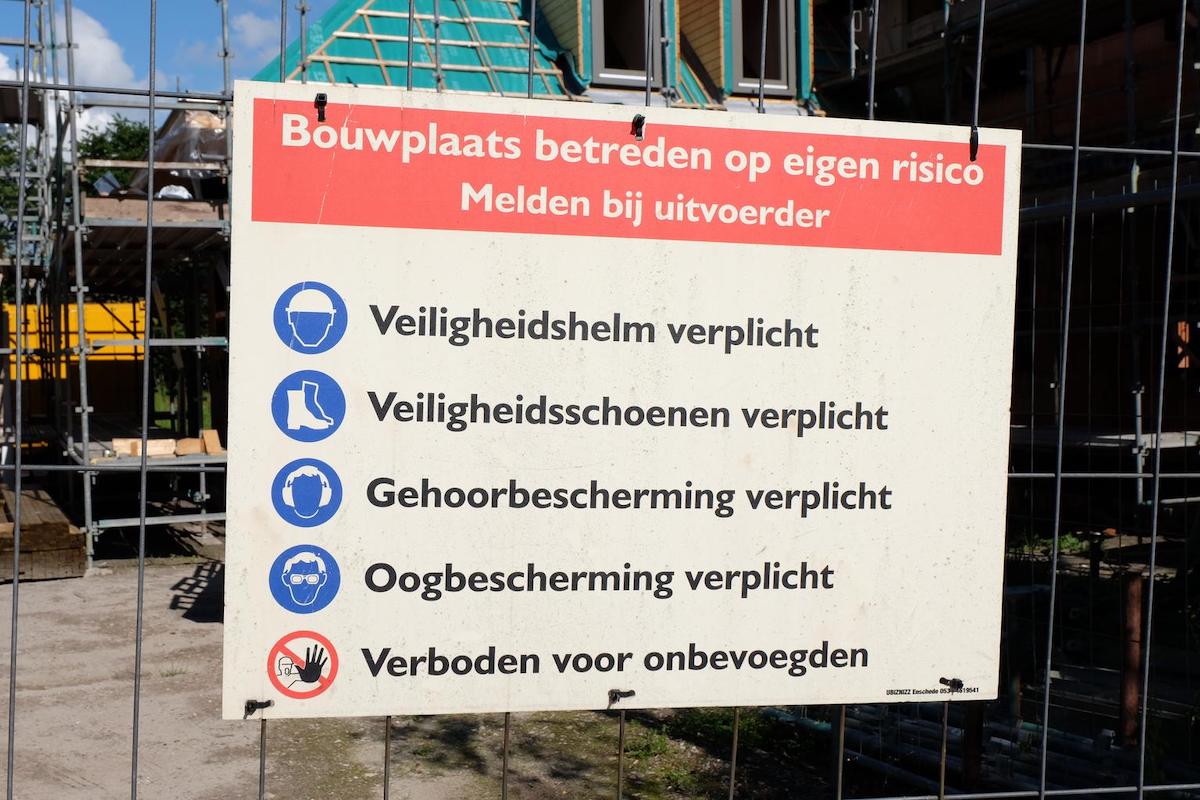
A construction site is usually a beehive of many activities. On commercial job sites, in particular, there can be up to 100 tradespeople working at once. There are specific tradesmen that are in charge of operating the crane (or cranes if there is more than one on-site) with heavy construction material. Other tradespeople are on top of the building fixing blocks with concrete, the supervisor is around making sure the work is going right, and the list of activities is endless.
As you could imagine, when working along-side heavy machinery and materials, there are many risks and safety precautions involved. Especially when some of the largest cranes and concrete slabs are present tradesmen and bystanders need to be extremely careful. The presence of heavy equipment being lifted, the noise and dust emitted by the construction activities are all potential health and safety hazards. Any person at or close to the construction site is, therefore, expected to notice and heed the safety signs.
National construction authorities must ensure that safety and health precautions are sufficient. The most common way of ensuring this is by placing safety signs on the construction site. Doing so sensitises workers and anyone accessing the construction site of the risk of injuries and other health hazards. Besides, employers could land in legal problems if they overlook the responsibility of placing these signs. And because they must be noticed, construction site safety signs are presented in bright colours such as red, yellow, green, and blue. These colours often create a contrast for the symbols or words that bear the actual safety message often written in black or white, in large fonts, and sometimes in two or more languages.
Here are the top 5 safety messages on construction site safety signboards.
The prohibition of entry sign
A prohibition of entry sign forbids unauthorised persons from accessing the construction site. They can be written with different wording but always deliver the same message. Here are some examples of no entry messages:
- Stop! Do not enter. Construction area
- Danger: Construction Area. Authorised personnel only.
- Warning: Do not enter. Construction area.
- Danger: Hard hat area.
- Caution: Construction area. Keep out/off
Constructor protection-wear signs
These are signs that target the constructors’ safety, calling them to protect themselves from accidents and health risks. They include:
- Hard hats required in this area
- High visibility jackets must be worn
- Protective footwear must always be worn
Visitor safety signs
Messages on visitor safety signs preempt dangers by requiring unauthorised persons to follow a particular procedure or announce their presence. They may take one of these forms:
- Anyone who wishes to visit the site should report to the head office first
- Notice: Permission must be obtained before entering the construction site
Children safety signs
Children look for play space anywhere and may do so at construction sites. To ensure the children’s safety; construction sites may put up signs that call those who have responsibility for children to ensure their safety. The signs may read:
- Attention: Children must not play on this site
- Warning: Parents are advised to keep children away from the construction site
The danger of dropping objects signs
Dropping objects are a common occurrence in construction. Signboards reminding both constructors and anyone near the construction site of falling objects are crucial. We may not always be aware of what is above us.
Common warning messages to protect from dropping objects include:
- Caution: Workers above. Be alert!
- Warning: Men working overhead
- Danger: Demolition work in progress
- Beware of falling objects
Whether you are a tradesmen, a visitor, or just passing by, a construction site, it is essential to pay attention to health and safety signs. It’s always better to be safe than sorry.




